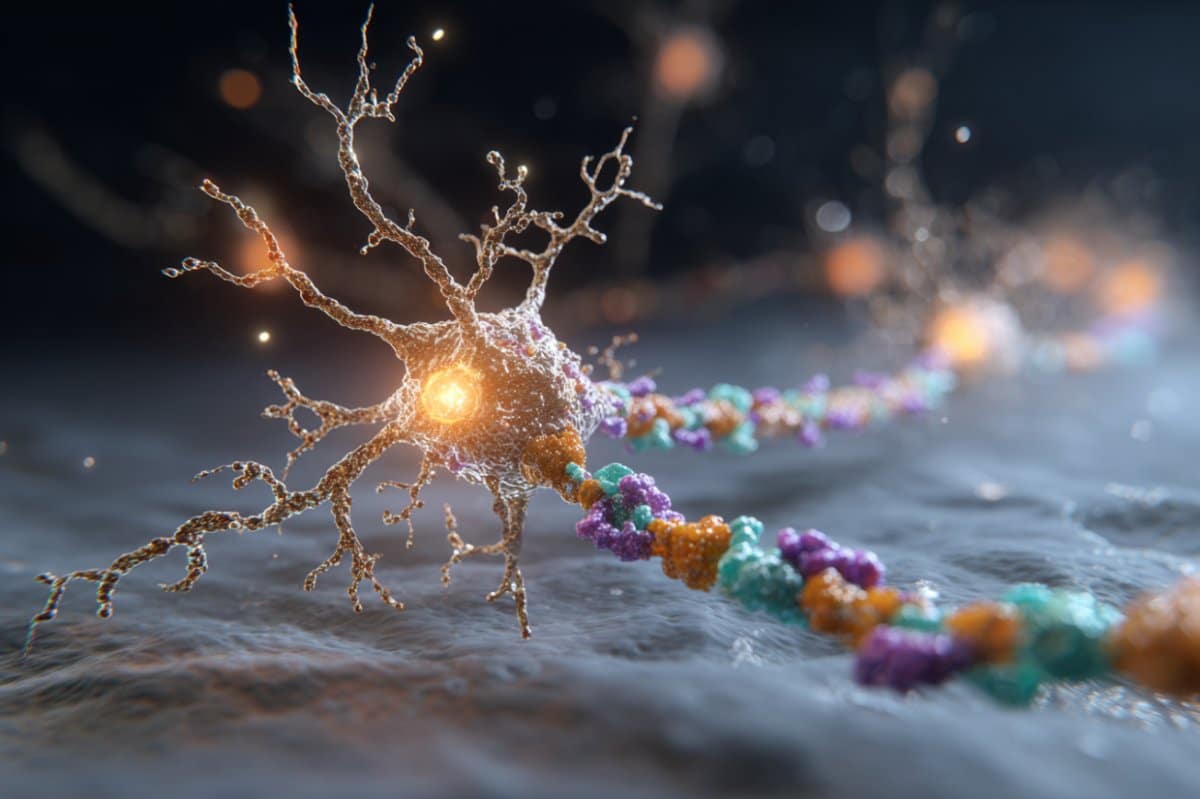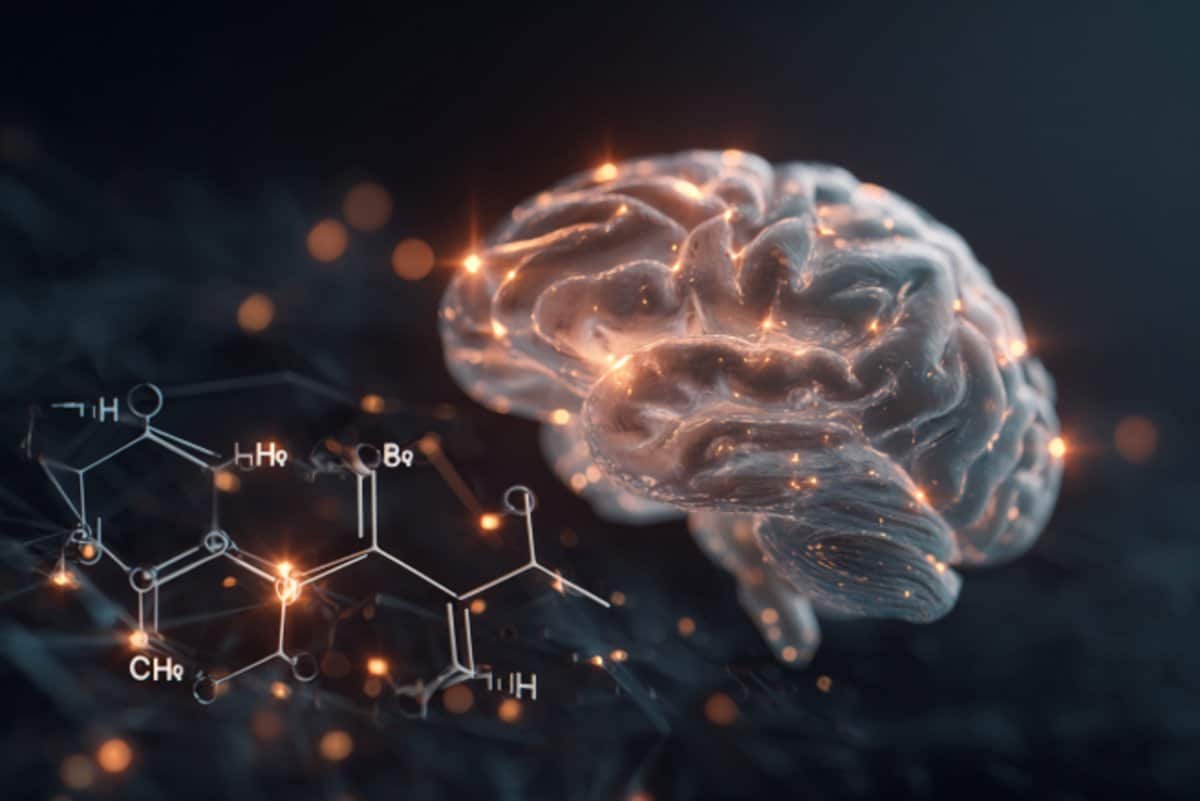Abstract: Researchers have engineered a gene treatment transport car that successfully crosses the blood-brain barrier in mice. This leap forward makes use of a human protein to ferry healing genes into the mind, probably paving the best way for more secure and more practical therapies for more than a few mind illnesses, together with neurodevelopmental and neurodegenerative problems.Key Information:A brand new gene transport car makes use of a human protein to successfully pass the blood-brain barrier.This leap forward may just result in more secure and more practical gene treatments for more than a few mind illnesses.The brand new AAVs reached as much as 71 % of neurons and 92 % of astrocytes in several areas of the mind.Supply: Wide InstituteIn the most important step towards more practical gene treatments for mind illnesses, researchers from the Wide Institute of MIT and Harvard have engineered a gene-delivery car that makes use of a human protein to successfully pass the blood-brain barrier and ship a disease-relevant gene to the mind in mice expressing the human protein. For the reason that car binds to a well-studied protein within the blood-brain barrier, the scientists say it has a superb opportunity at operating in sufferers.Gene treatment may just probably deal with a variety of critical genetic mind problems, which recently haven’t any remedies and few remedy choices. However FDA-approved kinds of essentially the most recurrently used car for packaging and handing over those treatments to focus on cells, adeno-associated viruses (AAVs), aren’t in a position to successfully pass the blood-brain barrier at top ranges and ship healing shipment.  For years, researchers evolved AAVs for particular packages via making ready large AAV libraries and checking out them in animals to spot best applicants. Credit score: Neuroscience NewsThe huge problem of having treatments previous this barrier — a extremely selective membrane setting apart the blood from the mind — has stymied the advance of more secure and more practical gene treatments for mind illnesses for many years. Now researchers within the lab of Ben Deverman, an institute scientist and senior director of vector engineering on the Wide, have engineered the primary printed AAV that objectives a human protein to achieve the mind in humanized mice.The AAV binds to the human transferrin receptor, which is very expressed within the blood-brain barrier in people.In a brand new find out about printed in Science, the group confirmed that their AAV, when injected into the bloodstream in mice expressing a humanized transferrin receptor, crossed into the mind at a lot upper ranges than the AAV this is utilized in an FDA-approved gene treatment for the central frightened gadget, AAV9. It additionally reached a big fraction of necessary sorts of mind cells, together with neurons and astrocytes. The researchers then confirmed that their AAV may just ship copies of the GBA1 gene, which has been connected to Gaucher’s illness, Lewy frame dementia, and Parkinson’s illness, to a big fraction of cells all the way through the mind. The scientists upload that their new AAV can be a more sensible choice for treating neurodevelopmental problems brought about via mutations in one gene akin to Rett syndrome or SHANK3 deficiency; lysosomal garage illnesses like GBA1deficiency; and neurodegenerative illnesses akin to Huntington’s illness, prion illness, Friedreich’s ataxia, and single-gene kinds of ALS and Parkinson’s illness.“Since we got here to the Wide we’ve been centered at the undertaking of enabling gene treatments for the central frightened gadget,” stated Deverman, senior writer at the find out about. “If this AAV does what we expect it’ll in people according to our mouse research, it’ll be so a lot more efficient than present choices.” “Those AAVs have the possible to switch a large number of sufferers’ lives,” stated Ken Chan, a co-first writer at the paper and workforce chief from Deverman’s workforce who has been operating on fixing gene transport to the central frightened gadget for almost a decade.Mechanism firstFor years, researchers evolved AAVs for particular packages via making ready large AAV libraries and checking out them in animals to spot best applicants. However even if this method succeeds, the applicants steadily don’t paintings in different species, and the method doesn’t supply details about how the AAVs achieve their objectives. It will make it tricky to translate a gene treatment the usage of those AAVs from animals to people.To discover a transport car with a better likelihood of attaining the mind in other people, Deverman’s group switched to another method. They used a manner they printed closing 12 months, which comes to screening a library of AAVs in a take a look at tube for ones that bind to a particular human protein. Then they take a look at essentially the most promising applicants in cells and mice which have been changed to precise the protein. As their goal, the researchers selected human transferrin receptor, which has lengthy been the objective of antibody-based treatments that intention to achieve the mind. A number of of those treatments have proven proof of attaining the mind in people.The group’s screening methodology recognized an AAV referred to as BI-hTFR1 that binds human transferrin receptor, enters human mind cells, and bypasses a human cellular fashion of the blood-brain barrier. “We’ve discovered so much from in vivo displays but it surely has been difficult discovering AAVs that labored this effectively throughout species,” added Qin Huang, a co-first writer at the find out about and a senior analysis scientist in Deverman’s lab who helped broaden the screening technique to in finding AAVs that bind particular protein objectives. “Discovering one who works the usage of a human receptor is a huge step ahead.”Past the dishTo take a look at the AAVs in animals, the researchers used mice by which the mouse gene that encodes the transferrin receptor used to be changed with its human identical. The group injected the AAVs into the bloodstream of grownup mice and located dramatically upper ranges of the AAVs within the mind and spinal wire in comparison to mice with out the human transferrin receptor gene, indicating that the receptor used to be actively ferrying the AAVs around the blood-brain barrier. The AAVs additionally confirmed 40-50 occasions upper accumulation in mind tissue than AAV9, which is a part of an FDA-approved treatment for spinal muscular atrophy in babies however is reasonably inefficient at handing over shipment to the grownup mind. The brand new AAVs reached as much as 71 % of neurons and 92 % of astrocytes in several areas of the mind. In paintings led via analysis scientist Jason Wu, Deverman’s group extensively utilized the AAVs to ship wholesome copies of the human GBA1 gene, which is mutated in different neurological stipulations. The brand new AAVs delivered 30 occasions extra copies of the GBA1 gene than AAV9 in mice and have been delivered all the way through the mind. The group stated that the brand new AAVs are perfect for gene treatment as a result of they aim a human protein and feature equivalent manufacturing and purification yields as AAV9 the usage of scalable production strategies. A biotech corporate co-founded via Deverman, Apertura Gene Treatment, is already creating new treatments the usage of the AAVs to focus on the central frightened gadget.With extra construction, the scientists suppose it’s conceivable to make stronger the gene-delivery potency in their AAVs to the central frightened gadget, lower their accumulation within the liver, and keep away from inactivation via antibodies in some sufferers.Sonia Vallabh and Eric Minikel, two researchers on the Wide who’re creating therapies for prion illness, are curious about the possibility of the AAVs to ship mind treatments in people.“Once we consider gene treatment for a whole-brain illness like prion illness, you wish to have actually systemic transport and vast biodistribution in an effort to reach anything else,” stated Minikel. “Naturally going on AAVs simply aren’t going to get you anyplace. This engineered capsid opens up an international of probabilities.”Investment:This paintings used to be supported via Apertura Gene Treatment, the Nationwide Institutes of Well being Not unusual Fund, the Nationwide Institute of Neurological Problems and Stroke, and the Stanley Middle for Psychiatric Analysis.About this gene treatment and neurology analysis newsAuthor: Allessandra DiCorato
For years, researchers evolved AAVs for particular packages via making ready large AAV libraries and checking out them in animals to spot best applicants. Credit score: Neuroscience NewsThe huge problem of having treatments previous this barrier — a extremely selective membrane setting apart the blood from the mind — has stymied the advance of more secure and more practical gene treatments for mind illnesses for many years. Now researchers within the lab of Ben Deverman, an institute scientist and senior director of vector engineering on the Wide, have engineered the primary printed AAV that objectives a human protein to achieve the mind in humanized mice.The AAV binds to the human transferrin receptor, which is very expressed within the blood-brain barrier in people.In a brand new find out about printed in Science, the group confirmed that their AAV, when injected into the bloodstream in mice expressing a humanized transferrin receptor, crossed into the mind at a lot upper ranges than the AAV this is utilized in an FDA-approved gene treatment for the central frightened gadget, AAV9. It additionally reached a big fraction of necessary sorts of mind cells, together with neurons and astrocytes. The researchers then confirmed that their AAV may just ship copies of the GBA1 gene, which has been connected to Gaucher’s illness, Lewy frame dementia, and Parkinson’s illness, to a big fraction of cells all the way through the mind. The scientists upload that their new AAV can be a more sensible choice for treating neurodevelopmental problems brought about via mutations in one gene akin to Rett syndrome or SHANK3 deficiency; lysosomal garage illnesses like GBA1deficiency; and neurodegenerative illnesses akin to Huntington’s illness, prion illness, Friedreich’s ataxia, and single-gene kinds of ALS and Parkinson’s illness.“Since we got here to the Wide we’ve been centered at the undertaking of enabling gene treatments for the central frightened gadget,” stated Deverman, senior writer at the find out about. “If this AAV does what we expect it’ll in people according to our mouse research, it’ll be so a lot more efficient than present choices.” “Those AAVs have the possible to switch a large number of sufferers’ lives,” stated Ken Chan, a co-first writer at the paper and workforce chief from Deverman’s workforce who has been operating on fixing gene transport to the central frightened gadget for almost a decade.Mechanism firstFor years, researchers evolved AAVs for particular packages via making ready large AAV libraries and checking out them in animals to spot best applicants. However even if this method succeeds, the applicants steadily don’t paintings in different species, and the method doesn’t supply details about how the AAVs achieve their objectives. It will make it tricky to translate a gene treatment the usage of those AAVs from animals to people.To discover a transport car with a better likelihood of attaining the mind in other people, Deverman’s group switched to another method. They used a manner they printed closing 12 months, which comes to screening a library of AAVs in a take a look at tube for ones that bind to a particular human protein. Then they take a look at essentially the most promising applicants in cells and mice which have been changed to precise the protein. As their goal, the researchers selected human transferrin receptor, which has lengthy been the objective of antibody-based treatments that intention to achieve the mind. A number of of those treatments have proven proof of attaining the mind in people.The group’s screening methodology recognized an AAV referred to as BI-hTFR1 that binds human transferrin receptor, enters human mind cells, and bypasses a human cellular fashion of the blood-brain barrier. “We’ve discovered so much from in vivo displays but it surely has been difficult discovering AAVs that labored this effectively throughout species,” added Qin Huang, a co-first writer at the find out about and a senior analysis scientist in Deverman’s lab who helped broaden the screening technique to in finding AAVs that bind particular protein objectives. “Discovering one who works the usage of a human receptor is a huge step ahead.”Past the dishTo take a look at the AAVs in animals, the researchers used mice by which the mouse gene that encodes the transferrin receptor used to be changed with its human identical. The group injected the AAVs into the bloodstream of grownup mice and located dramatically upper ranges of the AAVs within the mind and spinal wire in comparison to mice with out the human transferrin receptor gene, indicating that the receptor used to be actively ferrying the AAVs around the blood-brain barrier. The AAVs additionally confirmed 40-50 occasions upper accumulation in mind tissue than AAV9, which is a part of an FDA-approved treatment for spinal muscular atrophy in babies however is reasonably inefficient at handing over shipment to the grownup mind. The brand new AAVs reached as much as 71 % of neurons and 92 % of astrocytes in several areas of the mind. In paintings led via analysis scientist Jason Wu, Deverman’s group extensively utilized the AAVs to ship wholesome copies of the human GBA1 gene, which is mutated in different neurological stipulations. The brand new AAVs delivered 30 occasions extra copies of the GBA1 gene than AAV9 in mice and have been delivered all the way through the mind. The group stated that the brand new AAVs are perfect for gene treatment as a result of they aim a human protein and feature equivalent manufacturing and purification yields as AAV9 the usage of scalable production strategies. A biotech corporate co-founded via Deverman, Apertura Gene Treatment, is already creating new treatments the usage of the AAVs to focus on the central frightened gadget.With extra construction, the scientists suppose it’s conceivable to make stronger the gene-delivery potency in their AAVs to the central frightened gadget, lower their accumulation within the liver, and keep away from inactivation via antibodies in some sufferers.Sonia Vallabh and Eric Minikel, two researchers on the Wide who’re creating therapies for prion illness, are curious about the possibility of the AAVs to ship mind treatments in people.“Once we consider gene treatment for a whole-brain illness like prion illness, you wish to have actually systemic transport and vast biodistribution in an effort to reach anything else,” stated Minikel. “Naturally going on AAVs simply aren’t going to get you anyplace. This engineered capsid opens up an international of probabilities.”Investment:This paintings used to be supported via Apertura Gene Treatment, the Nationwide Institutes of Well being Not unusual Fund, the Nationwide Institute of Neurological Problems and Stroke, and the Stanley Middle for Psychiatric Analysis.About this gene treatment and neurology analysis newsAuthor: Allessandra DiCorato
Supply: Wide Institute
Touch: Allessandra DiCorato – Wide Institute
Symbol: The picture is credited to Neuroscience NewsOriginal Analysis: Open get right of entry to.
“An AAV capsid reprogrammed to bind human Transferrin Receptor mediates brain-wide gene transport” via Ben Deverman et al. ScienceAbstractAn AAV capsid reprogrammed to bind human Transferrin Receptor mediates brain-wide gene deliveryDeveloping automobiles that successfully ship genes all the way through the human central frightened gadget (CNS) will increase the variety of treatable genetic illnesses.We engineered an adeno-associated virus (AAV) capsid, BI-hTFR1, that binds human transferrin receptor (TfR1), a protein expressed at the blood-brain barrier (BBB). BI-hTFR1 used to be actively transported throughout human mind endothelial cells and, relative to AAV9, equipped 40–50 occasions larger reporter expression within the CNS of human TFRC knock-in mice.The improved tropism used to be CNS-specific and absent in wild kind mice.When used to ship GBA1, mutations of which purpose Gaucher illness and are connected to Parkinson’s illness, BI-hTFR1 considerably higher mind and cerebrospinal fluid glucocerebrosidase task in comparison to AAV9.Those findings determine BI-hTFR1 as a possible vector for human CNS gene treatment.
Engineered Virus Crosses Blood-Mind Barrier to Ship Gene Treatment – Neuroscience Information














:max_bytes(150000):strip_icc()/GettyImages-2159881840-e2e04c33a90644f9b7479e6e93e53199.jpg)
